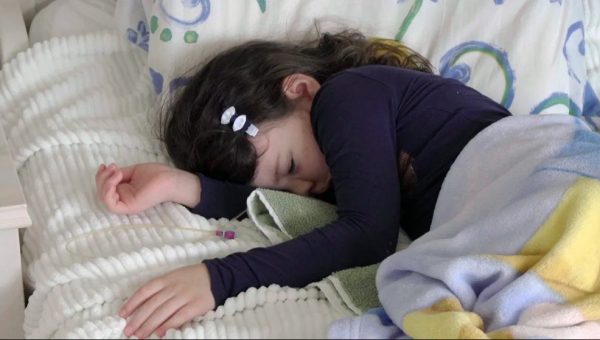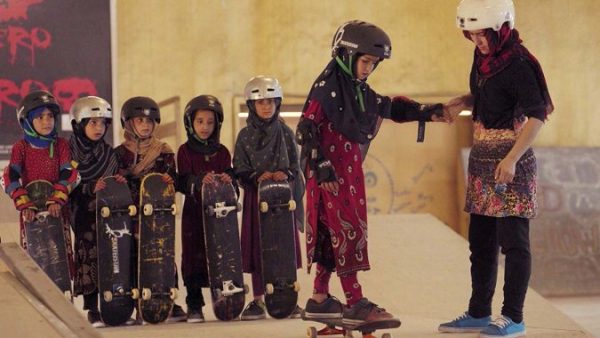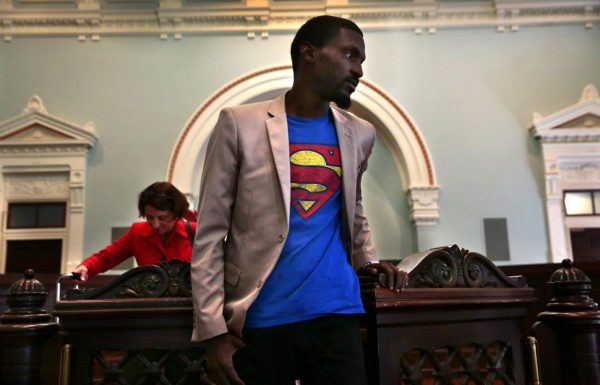Film Review: The 2020 Oscar Documentary Short Films
By Neil Giordano
A critical look at this year’s Oscar-nominated documentary shorts.
As customary, this year’s Oscar-nominated documentary shorts include a wide variety of styles and contemporary subjects, although only two selections leave a lasting impression. All five nominees will play in two consecutive showings at the Institute of Contemporary Art, Boston on February 8 at 1 p.m. and 3 p.m. Four of the shorts are also available digitally on various streaming platforms (see below).

A scene from Life Overtakes Me.
Life Overtakes Me at times has the eerie air of a dystopian sci-fi drama, but its focus is on the sad realities of the world’s refugee crisis. Tracing the stories of three families who escaped to Sweden after threats of violence in their homelands, the film recounts their life in limbo (physical and existential), with affecting emphasis on the plight of their youngest members. The kids are afflicted with “Resignation Syndrome,” a dissociative disorder that has reached epidemic levels in Sweden. Confronted with the very real possibility they might be deported to the violence from which they escaped, the children slowly enter a catatonic state, shutting out the extreme stress and fear. The parents, while dealing with the life-or-death vagaries of asylum and immigration law, are confronted with what has become a severely disabled child, who needs feeding tubes and physical therapy. The adolescents will wake again (sometimes months or years later) only after their respective family situations have become more stable. Life Overtakes Me recounts the families’ day-to-day struggles. There is audio of Swedish physicians and journalists explaining the epidemic but, more powerfully, the filmmakers also cut in unsettling drone shots of the Swedish winter landscapes. These icy, spectral visions poetically evoke the truly bizarre nature of the epidemic. Also available on Netflix.

A scene from Learning to Skateboard in a Warzone (If You’re a Girl)
Taking a leap across the world and a shift in mood, the more upbeat Learning to Skateboard in a Warzone (If You’re a Girl) is set in a “Skateistan” schoolhouse in Kabul, Afghanistan. The title tells it all. While the film relies on some of the time-honored clichés of the doc-short tradition — young people in a repressive society turn culturally rebellious — the story’s subjects and playful filmmaking are redemptive. The challenges for girls in Afghanistan, particularly restrictions on their education, have been documented in past films. Here the issue takes on a wholly new look as the narrative recounts the efforts of the school to teach self-confidence and self-expression. Part of the day, the students learn literacy and are given lessons in their value as human beings. Later in the day the fun begins: half of the school building (maybe a converted airplane hangar?) has been transformed into an epic skate park. The film is structured as a series of skateboarding lessons (“Step 1: Stand on the Board” et al.), each step a metaphor about increasing the girls’ self-esteem and burgeoning confidence. The teachers and school officials (mainly women and older teen girls, but also some men) know the risks they are taking. The Taliban are still active in and around Kabul, and there are extremist sympathizers outside the school walls who want to force the girls to accept patriarchal submissiveness. What’s most memorable about Learning to Skateboard is its joyfully incongruous images of girls in headscarves and traditional Afghan clothing poppin’ ollies and shredding on the ramps. Also available on AETV (cable or live TV subscription needed).

A scene from Walk Run Cha-Cha
Walk Run Cha-Cha aims for a similar upbeat tone, though this film doesn’t hit its mark nearly as well. It is a love story of nearly 40 years that revolves around a Vietnamese-American husband and wife. They love to dance; both fondly recall the popular music (the Bee Gees and Santana’s “Oye Como Va”) that inspired them to dance as teenagers, defying the cultural and political repression that deemed Western music verboten. Dance once expressed the pair’s sexuality and longing for freedom. They are now attempting to recapture that enthusiasm in middle age by becoming part of the competitive dance circuit in southern California. It is an oft-told story of immigrants finding their promised land in America, rendered well enough, though it is far from memorable. A set-piece featuring one of their dance performances tries, but fails, to serve as a symbolic and emotional finale. It ends up bordering on pure schmaltz. Available to stream on New York Times Op-Docs or Vimeo.
In the Absence takes a stark turn into grimmer territory: the 2014 Sewol ferry sinking in South Korea, a disaster that eventually brought down the presidency of Park Geun-hye. The most journalistic of these short films, it was produced in part by Laura Poitras (Citizenfour) and the Field of Vision documentary initiative she co-founded. Unfortunately, pieced together almost entirely of contemporaneous footage, In the Absence sorely lacks a protagonist to give it shape and personality. Where the film succeeds is in its illustration of the confusion during the hours of the ferry’s sinking, and the government’s shocked but inert response. The filmmakers do well in withholding the grim statistics of the tragedy until the end; this indifference echoes the lack of urgency and comprehension on the part of the Coast Guard and President’s office when faced with what would become one of the worst calamities in the nation’s history. What receives less screen time: the trauma suffered by the civilian divers as well as the first responders — they bore the initial brunt of the horrors of the event. A focus on their individual stories may have served the film’s purposes more aptly. Available to stream on Vimeo.

A scene from St. Louis Superman.
St. Louis Superman is a documentary short that calls for more rather than less. It is the story of Black Lives Matter activist Bruce Franks, Jr., aka “Ooops” the battle rapper, aka “Superman” to his supporters. The film depicts Franks’s successful campaign for a seat in the notoriously white, conservative Missouri House of Representatives, where he represented Ferguson for one term. A true local hero, Franks personifies the grassroots concerns of the black community he represents, both as a victim of gun violence and a symbol of hope. He brings his very personal/political crusade to the statehouse, where he hopes to pass a bill that recognizes the public health consequences of violence. Franks’ intense life story is rife with contradictions; his struggles against depression and cynicism make for a complex American tale that touches on race, mental health, and the unique history of the St. Louis suburbs. Every few minutes the film opens a door on an episode of Franks’s life that cries out for more in-depth treatment. Perhaps directors Smriti Mundhra and Sami Khan will be able to build their study into a feature-length film. (St. Louis Superman is unavailable to stream at this time).
Neil Giordano teaches film and creative writing in Newton. His work as an editor, writer, and photographer has appeared in Harper’s, Newsday, Literal Mind, and other publications. Giordano previously was on the original editorial staff of DoubleTake magazine and taught at the Center for Documentary Studies at Duke University.
